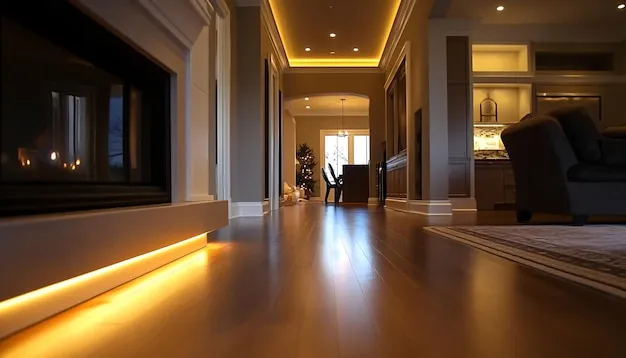Floor lighting in a building means using light and lighting methods to impact the environment of the building’s floor. This may include the use of artificial lights, natural light, or a combination of both. Floor lighting can be used to create a sense of beauty, increase brightness, and determine various light positions and directions within the building.
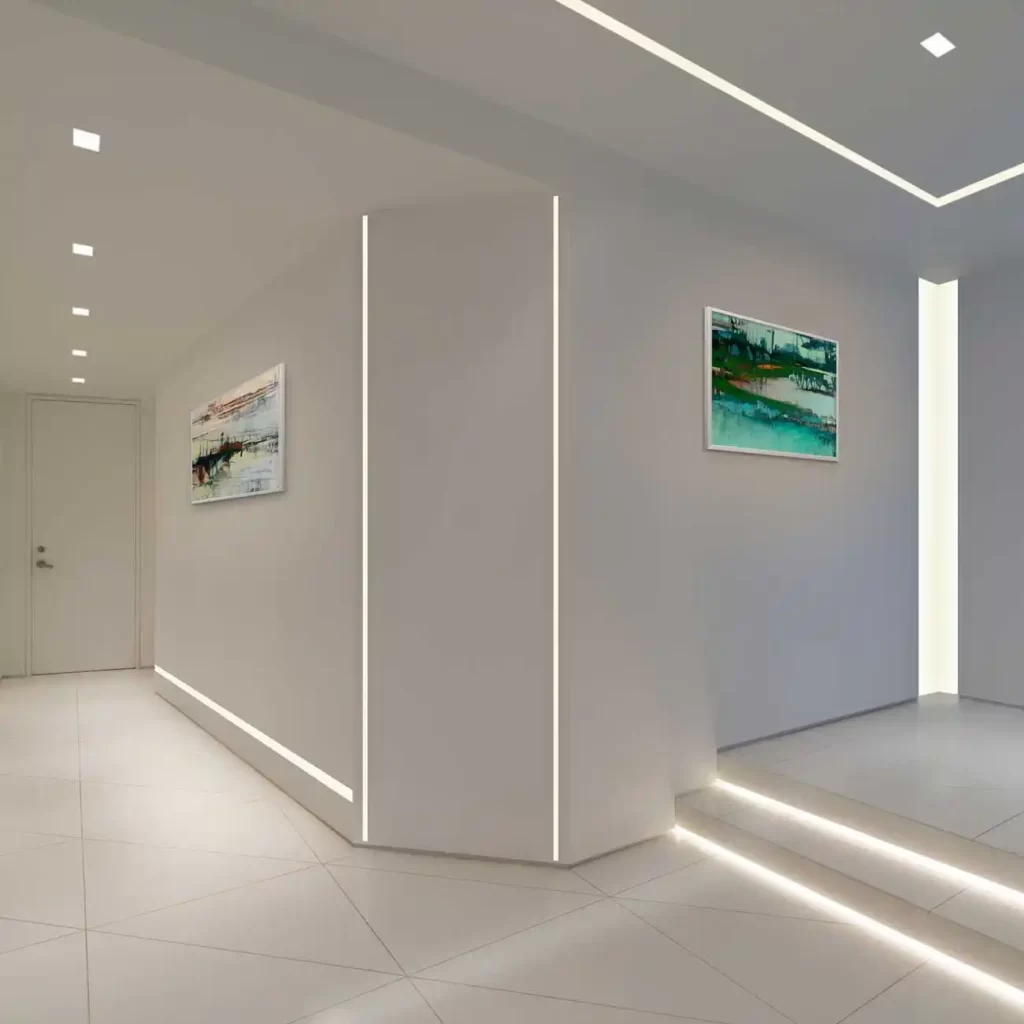
Methods of Floor Lighting in a Building
Floor lighting in a building can help create a beautiful, safe, and functional space. Here are some effective methods for floor lighting:
- Concealed Lighting
- In this method, lights are installed in hidden places such as under furniture, behind shelves, or beneath edges. This indirect lighting softly illuminates the space and adds a beautiful effect to the environment.
- Recessed Lighting
- Recessed lights are installed in the floor or wall in a way that maintains a smooth and even surface. This method is suitable for creating uniform and soft lighting in pathways and public spaces.
- Linear Lighting
- This method uses light strips installed in straight or curved lines along the floor. This type of lighting is ideal for highlighting pathways and creating beautiful light patterns.
- Spot Lighting
- This method uses focused lights to highlight specific details of the floor or important points in the space. These lights are usually concentrated on spots such as mosaics or special designs.
- Combination Lighting
- Combining multiple lighting methods can create unique and diverse light effects. For example, combining concealed and linear lighting can give the space a special and beautiful appearance.
- In-ground Lighting
- In-ground lights are installed at ground level and direct light upwards to highlight pathways and decorative details. This method is suitable for illuminating walking paths and creating beautiful light effects.
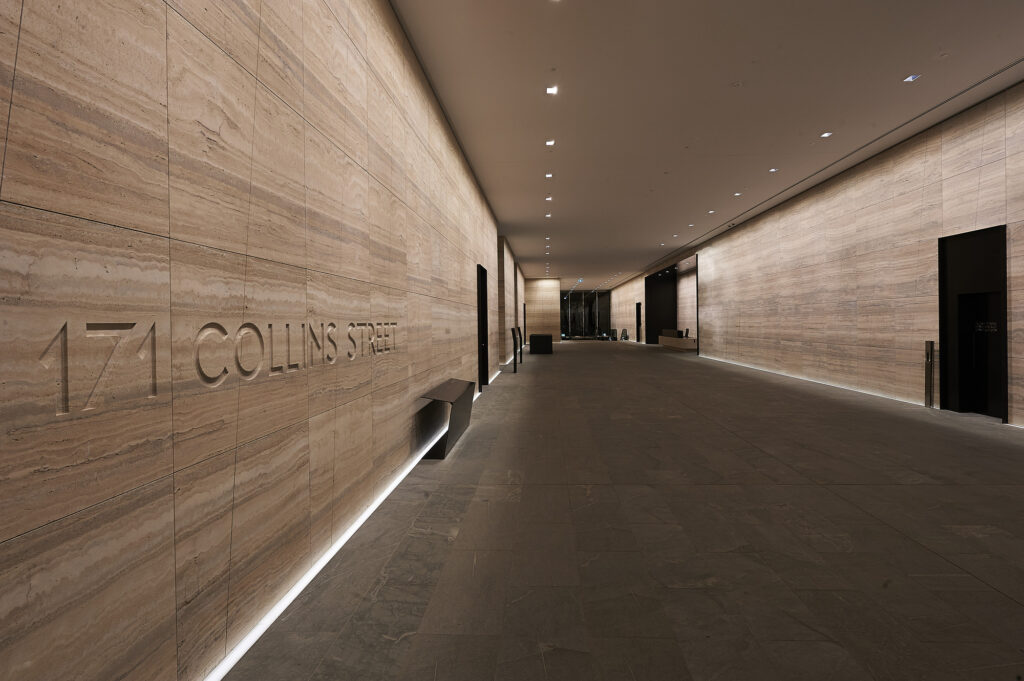
Importance of Floor Lighting in a Building: Aesthetics or Safety
Floor lighting plays a key role in creating a safe and beautiful space. Below, I will explain more about the aesthetic and safety aspects of floor lighting in a building:
Aesthetic Aspects
- Attractive Visual Effects: Proper lighting can highlight the patterns and interior architecture of the building. Using different lighting types such as colored lights, LED strips, and projectors can create unique and beautiful lighting effects.
- Creating a Sense of Space: Lighting can make the interior space feel more open, cozy, and pleasant. Using warm or cool lights can create different atmospheres in the space.
- Emphasizing Architectural Details: Precise and focused lighting can highlight architectural details such as mosaics, floor patterns, and specific designs, enhancing the space’s beauty.
Safety Aspects
- Increasing Pathway Visibility: Floor lighting, especially in pathways and stairs, ensures that people can move easily and without the risk of falling.
- Preventing Accidents: Proper lighting in hazardous areas can prevent accidents and falls. This is particularly important for the elderly and children.
- Sense of Security and Calm: Adequate lighting can create a sense of security and calm. Enough light in high-traffic areas makes people feel that the environment is safe and controlled.
Examples of Floor Lighting in a Building
- Entryway Lighting: Using in-ground lights in entryways and lobbies can create beautiful lighting effects while also increasing visibility and security.
- Hallway and Stair Lighting: LED strips and linear lights can be installed along hallways and stairs to enhance both the beauty of the space and the visibility of pathways.
- Multipurpose Room Lighting: Using small projectors and smart systems can help create diverse and controlled lighting effects in multipurpose rooms.
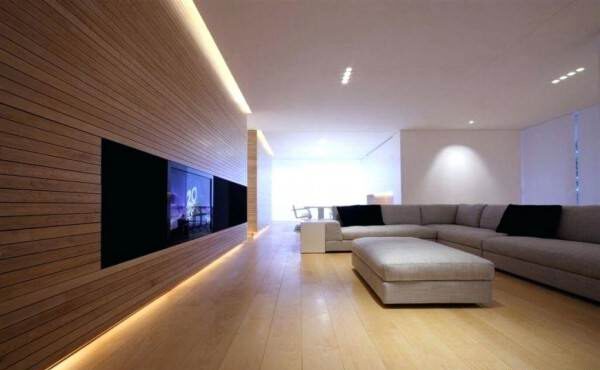
Best Lighting Sources for Floors
- LED In-ground Lights: These lights are installed in the floor and project light upwards. They are suitable for pathways, creating beautiful and decorative lighting effects. Due to their high resistance to impact and long durability, these lights are an excellent option for indoor use.
- LED Strips: LED strips are highly flexible and can be installed along pathways, under stair edges, and around floor borders. These strips can be adjusted with different colors and light intensities to enhance the space’s appearance.
- LED Linear Lights: These lights are installed in grooves and floor edges and produce direct light, which is ideal for highlighting pathways and stair edges. LED linear lights can be continuously or intermittently installed to provide uniform and attractive lighting.
- Small Projectors: Small projectors are usually installed in the floor and produce focused light, suitable for highlighting specific floor details such as mosaics or unique patterns. These projectors are generally adjustable and can direct light at different angles.
- Smart Lighting Systems: These systems allow you to automatically adjust light intensity and color. Using remote controls or mobile applications, you can optimize floor lighting in the building. These systems can be set based on timing or motion sensors.
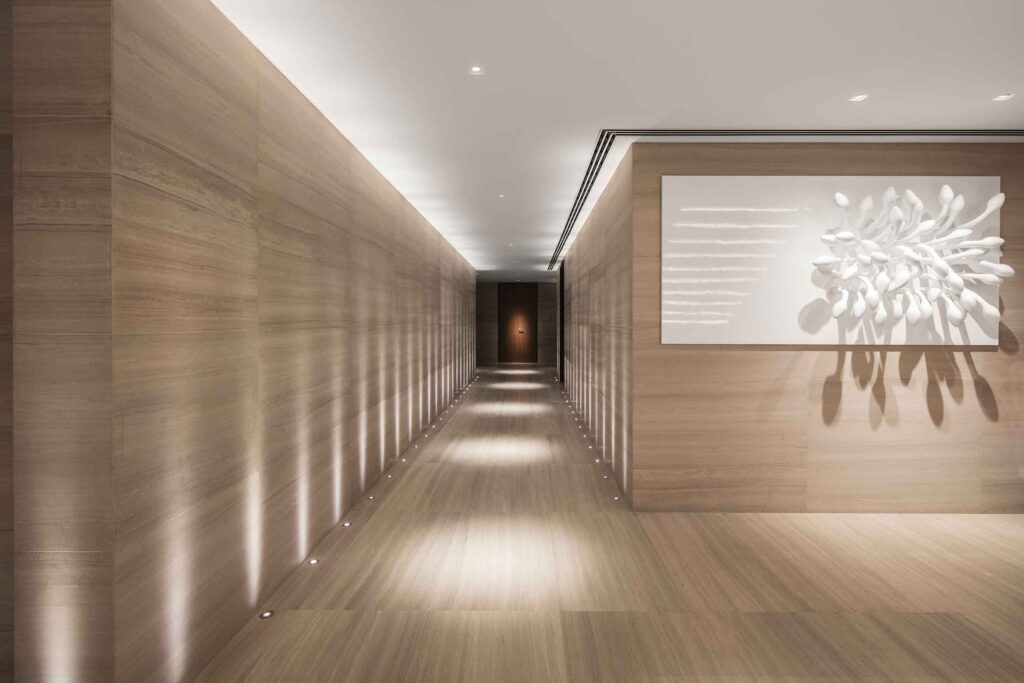
Final Words
Ground lighting is a lighting method where light is emitted directly from the ground surface. This method is often used for illuminating corridors, parking lots, open spaces, as well as building facades and interior spaces. For implementing ground lighting and purchasing suitable lights, contact Shamim Andisheh Company.

 English
English العربية
العربية